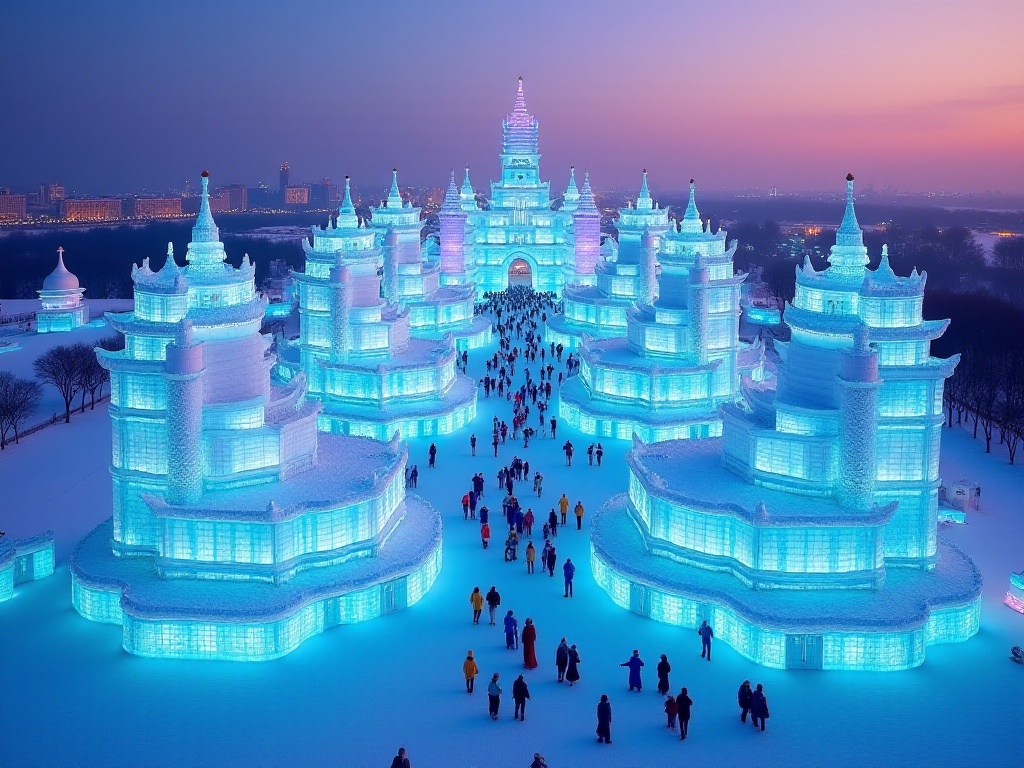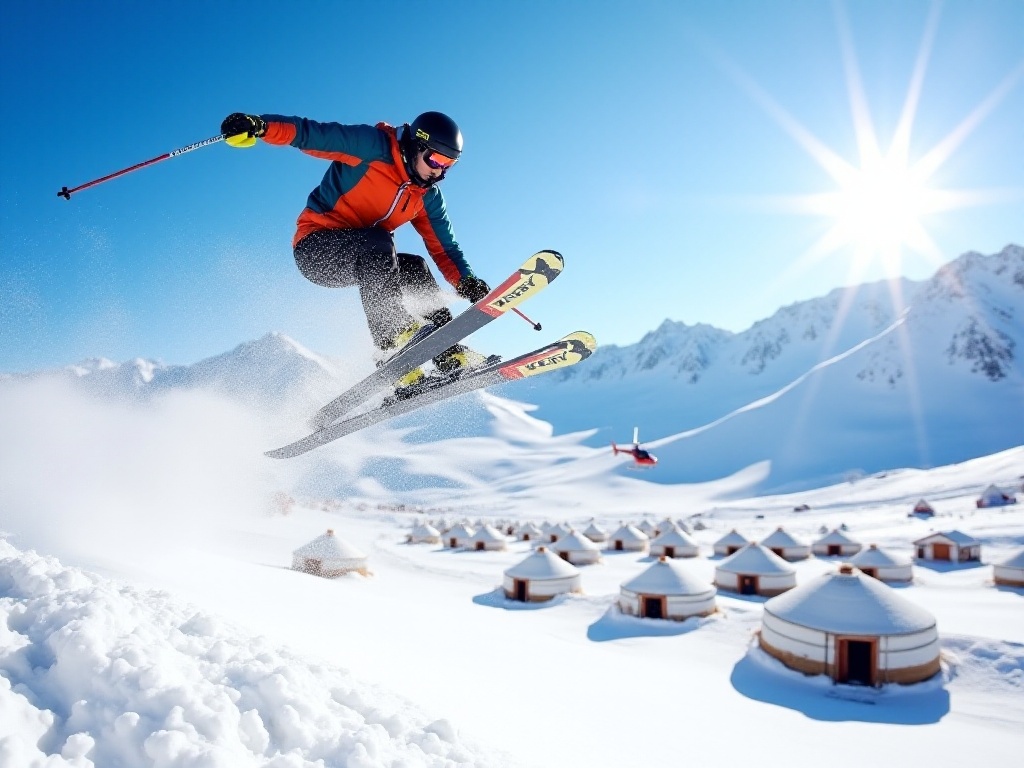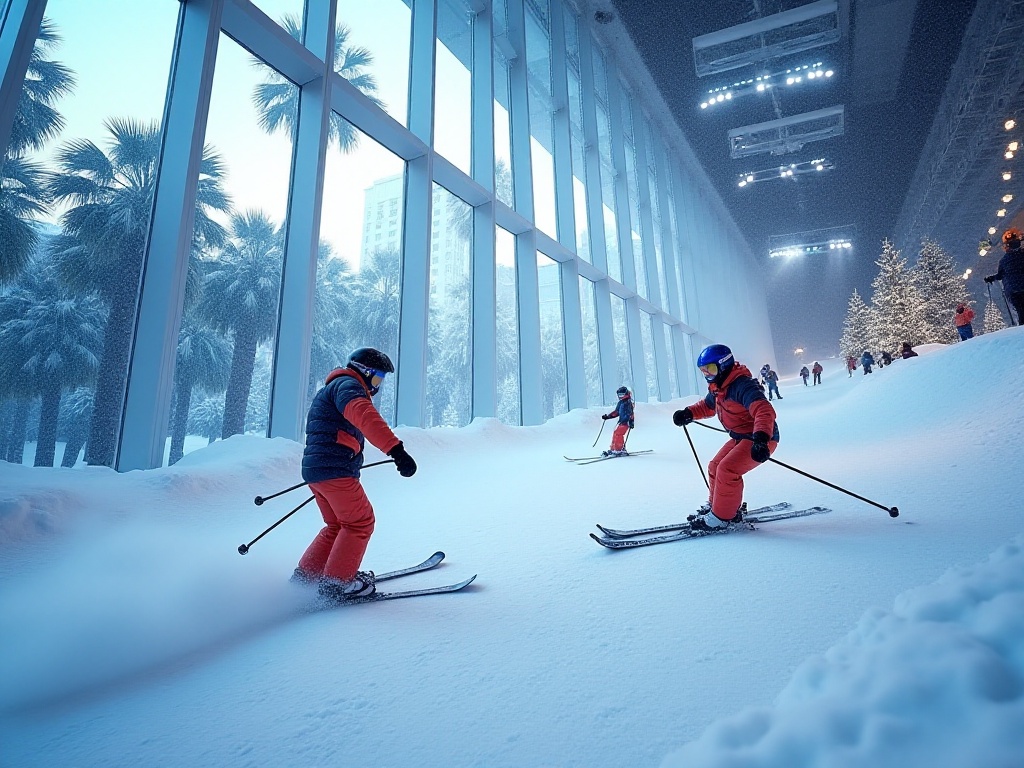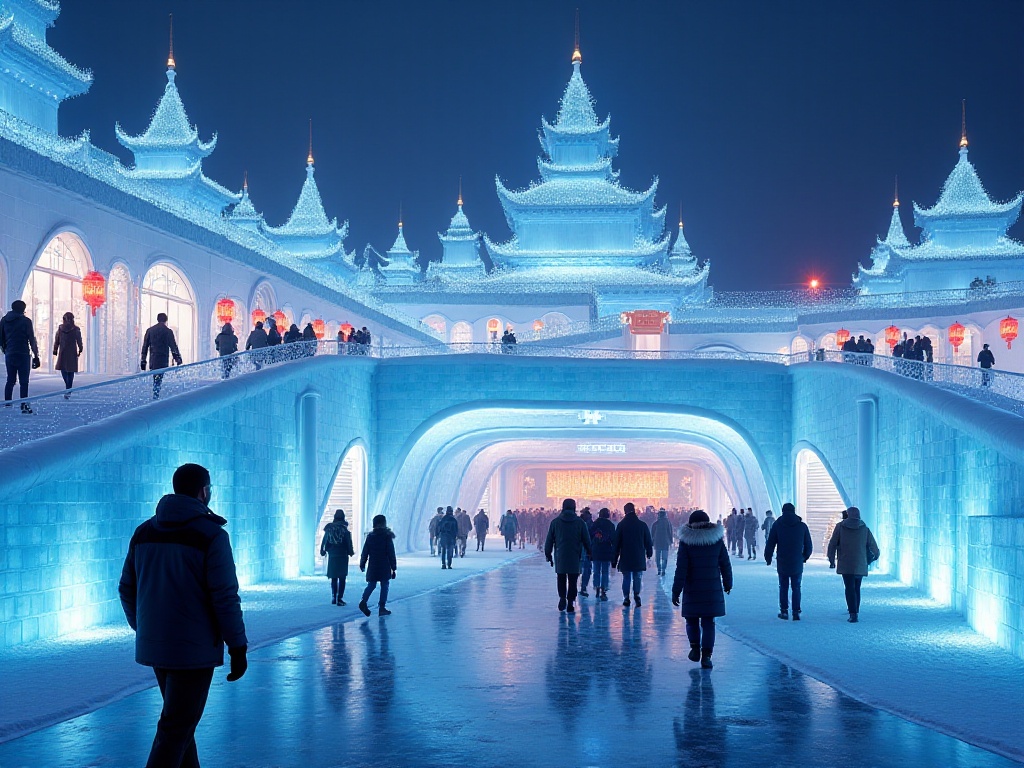Opening Thoughts
Sitting in a café next to Harbin Ice and Snow World, holding a cup of hot chocolate and watching crowds of tourists through the floor-to-ceiling windows, I fell into deep contemplation. The sweet aroma of hot chocolate wafted through the cold air while laughter and chatter from outside created a unique winter tableau. Who could have imagined that just ten years ago, winter in Northeast China was a low season for tourism, with empty streets and few visitors? Now, it has become one of the nation's hottest tourist destinations, with attractions packed with visitors and bustling with activity.
In the winter of 2023, Harbin experienced an unprecedented tourism peak. Tourist numbers increased by over 50% year-on-year, hotels were fully booked, and reservation numbers hit historic highs. On social media, topics about Harbin continued to trend, from food to attractions, from culture to experiences, with tourists meticulously documenting every corner. This phenomenon makes one wonder: what changes transformed Northeast China's cold winter into the hottest tourist season?
National Layout
Recently, the Ministry of Culture and Tourism introduced 12 premium winter tourism routes, which injected new vitality into the nation's ice and snow tourism industry. These carefully designed routes extend from Mohe in the north to Hainan in the south, from Heilongjiang in the east to Xinjiang in the west, weaving a nationwide "ice and snow tourism network." Each route has its unique characteristics, combining traditional ice and snow sightseeing with local cultural elements and folk customs.
Last winter, I witnessed a memorable scene at an indoor ski resort in Chongqing. A group of southern children in short sleeves, wearing ski goggles, were having the time of their lives in the artificial snow. Some were rolling in the snow, others were learning basic skiing movements, and some were building snowmen, their faces radiating pure joy. This scene made me deeply realize that technological advances have broken geographical limitations, making ice and snow tourism no longer exclusive to the north.
Ice and snow tourism has now formed a complete industrial ecosystem. In Beijing, you can experience ice sports at the Capital Indoor Stadium; in Chongqing, you can enjoy southern snow fun at indoor ski resorts; in Sichuan, you can admire the magnificent snow scenery at Xiling Snow Mountain; in Xinjiang, you can experience pristine snow fields in Altay; and in the three northeastern provinces, there are winter wonderlands everywhere.
This comprehensive layout includes not only outdoor natural landscapes but also rich indoor activities. Ice and snow themed museums across the country showcase the historical origins of ice and snow culture, while folk activities allow people to experience strong local characteristics. For example, in Harbin, you can visit Ice and Snow World to appreciate exquisite ice sculptures; in Jilin, you can experience traditional winter fishing culture; in Changchun, you can participate in various interactive ice festival activities.
Ice and snow tourism projects in different regions have their own characteristics. Northern regions rely on natural ice and snow resources to create a series of outdoor activities. Southern regions fully utilize technology to build indoor ice and snow venues, allowing visitors to enjoy winter sports even in the warm south. This north-south complementary development model has brought unprecedented vitality to China's ice and snow tourism.

Northeast Leadership
As China's "leader" in ice and snow tourism, the Northeast region has developed a uniquely ingenious strategy. The National Development and Reform Commission's latest policy extends the visa-free transit period for foreign visitors to Harbin to 144 hours, which has undoubtedly injected strong momentum into the international development of Northeast ice and snow tourism.
The other day at the airport, I met a couple from Korea. They told me that it was precisely this extended visa-free period that prompted their last-minute decision to add Harbin to their travel itinerary. This couple's experience is just one example among many international tourists. More and more foreign visitors are attracted by the unique ice and snow charm of the Northeast, coming to experience the winter scenery here.
The development of ice and snow tourism in the Northeast is not a solo effort. The Beijing-Tianjin-Hebei region, with its capital's location advantage and complete infrastructure, provides strong tourist sources and transportation support. The Yangtze River Delta region, relying on its strong economic strength and tourism consumption capacity, has become an important source of tourists. The Guangdong-Hong Kong-Macao Greater Bay Area, with its high degree of internationalization, provides new ideas for the international development of ice and snow tourism.
Under such regional linkage, the Northeast is steadily progressing toward its goal of becoming Asia's top winter tourism destination. Local governments and tourism agencies are working together to continuously improve infrastructure, enhance service quality, innovate tourism products, and increase the influence of Northeast ice and snow tourism brands in the international market.
Ice and snow tourism in the Northeast focuses not only on hardware construction but also on improving soft power. Various regions have successively launched a series of distinctive cultural activities, such as Harbin's Ice Festival, Jilin's ice and snow hot spring tour, and Changbai Mountain's outdoor adventures. These activities preserve Northeast traditional characteristics while incorporating modern elements, allowing tourists to deeply experience Northeast ice and snow culture.

Innovation and Upgrade
Speaking of innovation, Harbin Airport's humanized services are impressive. In temperatures below -20°C, the airport's intelligent guidance system and real-time information displays have become thoughtful assistants for tourists. Particularly noteworthy are the talking pickup signs, which not only provide directions in multiple languages but also offer reasonable travel advice based on weather conditions, making first-time visitors to the Northeast feel warmly welcomed.
In preparation for the 9th Asian Winter Games in 2025, Harbin's preparations are full of creativity. From venue construction to supporting facilities, from event organization to cultural display, innovative highlights can be seen everywhere. For example, Ice and Snow World has specially opened an Asian Winter Games themed area, allowing visitors to experience the unique charm of the Games in advance through modern technology such as sound and light effects.
Altay in Xinjiang, as the "birthplace of skiing," has put considerable effort into project innovation in recent years. Here you'll find not only traditional alpine skiing but also a series of novel ice and snow activities. Ski jumping lets you experience the thrill of being airborne, terrain half-pipes test your skills and courage, helicopter skiing takes you to explore untrodden snow areas, snowmobiling lets you race through vast snow fields, and snow tubing provides another way to play in the snow for non-skiers.
Last year when I experienced helicopter skiing in Altay, I personally felt the unique charm of this sport. The helicopter carried us over continuous snow-capped mountains and landed on an undeveloped pristine snow field. Looking around, the pure white snow was unmarked, and the surrounding snow-capped mountains sparkled in the sunlight, creating a view so stunning it left me speechless.
The paragliding project adds a new dimension to ice and snow tourism, allowing tourists to admire the magnificence of the snow world from above. The introduction of travel photography services allows tourists to permanently preserve these unforgettable moments. These diverse projects not only meet the needs of different levels of tourists but also inject new vitality into ice and snow tourism.

Market Response
Data provides the most convincing proof. This winter, Harbin Ice and Snow World not only expanded its area by nearly one-third but also added multiple ice and snow slides to meet growing tourist demand. Online search data shows that within just one month, searches for Harbin tourism products tripled, demonstrating the enormous market potential of ice and snow tourism.
Most interestingly, Harbin's tourism boom has driven tourism development throughout the Northeast region. Surrounding cities like Yichun and Qiqihar have also experienced tourism peaks, with hotel bookings increasing by over 80% year-on-year and flight bookings doubling. This chain effect has not only promoted balanced regional tourism development but also injected new vitality into the local economy.
Southern tourists have shown extraordinary enthusiasm for ice and snow tourism. In Guangdong, indoor ski resorts are exceptionally busy with continuously rising bookings. Last month, I witnessed an interesting scene in Guangzhou: a group of friends wearing Hawaiian shirts were having a great time at an indoor ski resort, saying they were "warming up" for their trip to the Northeast. This contrasting scene vividly illustrates the integration of northern and southern ice and snow tourism.
The positive market response is also reflected in changes in consumption structure. Tourists are no longer satisfied with simple sightseeing and check-ins but are increasingly focused on the depth and quality of experiences. Demand for high-quality accommodation, specialty cuisine, cultural experiences, and professional training has significantly increased. This consumption upgrade trend is driving the entire ice and snow tourism industry toward higher-level development.

A Promising Future
The development potential of ice and snow tourism is far from reaching its peak. As regional collaborative development continues to deepen, we will see more innovative tourism products and service models emerge. For example, virtual reality technology might provide better teaching guidance for ice and snow sports experiences; artificial intelligence technology might make tourism services more personalized and intelligent; and big data applications might help scenic areas better manage visitor flow and optimize services.
Cooperation between different regions will also become closer. Northern regions can export professional knowledge and management experience in winter sports, while southern regions can provide advanced technological support and market operation experience. This complementary cooperation model will promote more balanced and sustainable development of China's ice and snow tourism industry.
Future ice and snow tourism products will become more diversified. Whether admiring brilliant ice sculptures at Harbin Ice and Snow World, experiencing speed and excitement on Xinjiang's pristine snow fields, or enjoying ice and snow fun brought by technology at indoor ski resorts in the south, everyone can find their preferred way to experience ice and snow tourism.
As people's awareness and participation in winter sports increase, ice and snow tourism will no longer be just a seasonal tourism mode but will develop into a continuous lifestyle. This transformation can not only drive the development of related industries but also add more fun and vitality to people's lives.
In this new era of flourishing ice and snow tourism, everyone can become a participant and witness to winter sports. Whether you want to experience exciting outdoor activities, admire quiet snow scenery, or feel unique ice and snow culture, China's ice and snow tourism can meet your expectations. Let's look forward to more exciting stories brought by ice and snow tourism.


